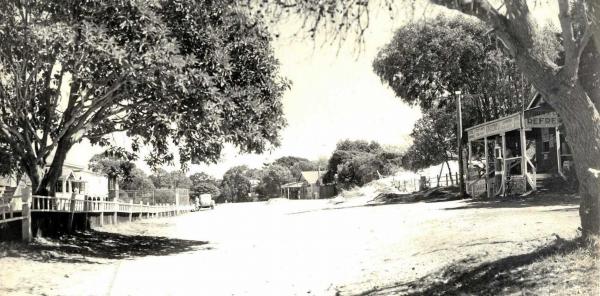By Phil Jarratt
Laguna Bay and Hastings Street
Sometimes it’s the best-known names that defy explanation. Take the iconic place-names Laguna Bay and Hastings Street, arguably Noosa’s greatest claims to fame. What do we know about their names? Not a lot.
We know that Laguna Bay was so-named by surveyor James Charles Burnett on July 25, 1847, without any record of the origin of the name. Burnett had been sent by the New South Wales colonial government to complete the work of Henry Stuart Russell, a squatter who had accompanied Andrew Petrie on his 1842 expedition from Moreton Bay to the Mary River, and had subsequently mapped parts of the coast. So Burnett, who gave his own name to a river further north, just happened to be sailing by and thought, Laguna Bay, why not?
The word is Spanish for lagoon or lake, and Laguna Bay is neither, although on a calm winter’s day in 1847 it may have presented as such. Laguna Beach in California, which features a number of small and rocky coves, was named in 1841, so I thought it possible that Burnett had some American history, but there is no evidence of this. It seems the name was just a whim.
Hastings Street, which is named on the first village map of Noosa Heads in 1878, is even more of a mystery. Despite numerous local historians seeking an answer over the years, no one has provided an adequate explanation, other than some educated guesswork involving timber-getters arriving from the mid-north coast of NSW where the Hastings River had been named after Francis Rawdon-Hastings, a governor general of India.
As it turns out, this theory could be very close to the truth, although my own educated guesswork points (in rather roundabout fashion) to another governor general of India called Hastings. In an illustrious career that has been well documented by William Dalrymple in his recent and voluminous book The Anarchy – which sits on my bedside table only half-read – Warren Hastings was both the governor general and the CEO of the British East India Company, which proved to be a cosy and profitable arrangement. But as far as we know, neither of the governors general made it to Australia, let alone to Noosa.
However, of many ships named after Warren Hastings, the Smith & Co barque launched in Newcastle Upon Tyne in 1855 plied the route to the Australian colonies until well into the 1870s, including several coastal runs to Moreton Bay, which may explain why some newly-arrived immigrant diggers named their 1868 Gympie gold strike the Warren Hastings Reef, possibly after the ship that had brought them to their payday.
Is it also possible that these miners, like so many of Gympie’s nouveau riche, parlayed some of their gold into landholdings in and around the new Noosa village, and suggested that the village’s only street be named after their strike?
Okay, I’m drawing a long bow here, but anyone got any better ideas?







